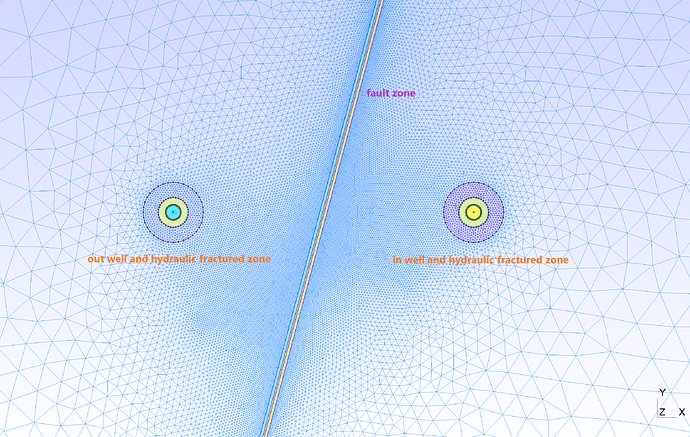Dear all,
I am modelling a THM process to investigate the fault stability during EGS stimulation. This problem is from initial equilibrium (before injection). The schematic diagram based on mesh is like this following picture. This is x-y plane, and y direction is depth direction, x direction is an arbitrary horizontal direction. The model is in subsurface, so y is negative.
My purpose is to get a stable and reasonable initial state before injecting operation. So, some configuration is that
(1) Initial condition:
1) Temperature: gradiently changes with depth
2) (pore, static) pressure: gradiently changes with depth
3) Initial effective stress: According force balance equation, I have calculated the initial effective stress based on the known (I have just set it) pore pressure and body force (that is gravity in -y direction). But I don’t know how displacement boundary conditions are involved and considered in this initial effective stress calculation or this equilibrium. In other words, if I give very rigid displacement boundary condition on four sides, the stress after first step would be very high, which is not correct definitely. If I give relatively flabby displacement boundary condition on some sides (such as no any displacement boundary condition on the top side and it’s true in real world)), the displacement (elastic deformation) after first step would be very large, which has messed up my desired pressure field. So, I want to ask how can I set reasonable bounday conditions for this problem?
(2) Other boundary condition:
1) Temperature: gradiently changes with depth
2) (pore, static) pressure: gradiently changes with depth
If you have any ideas or advice, please tell me. Thanks!
I will try to divide this equilibrium process into sub steps following Laxman’s suggestion.
Here is my prj and vtus,
prj_play.zip (12.8 MB)
Best,
Rui
